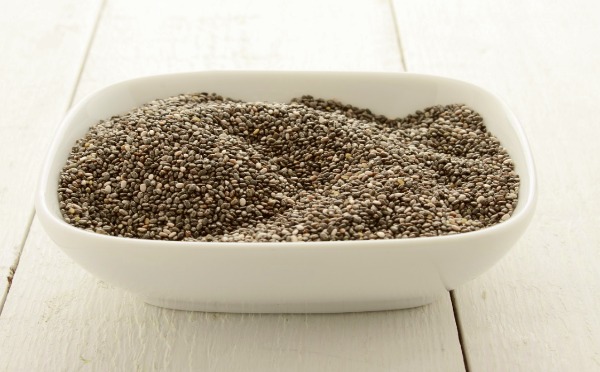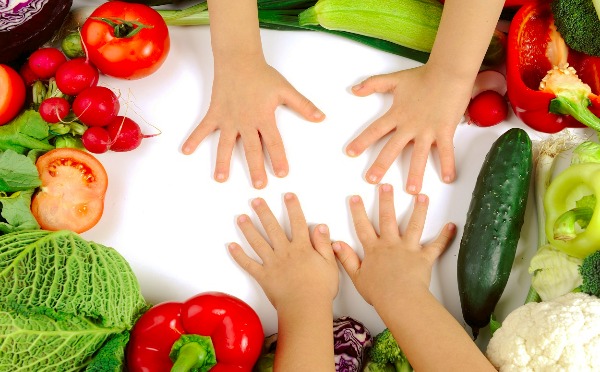
Food allergies in infants and children are a growing problem in the US. The prevalence of food allergies and associated anaphylaxis appears to be on the rise as well. Recent research is alarming with a study released by the Centers for Disease Control and Prevention in 2013 that reported food allergies among children increased approximately 50% between 1997 and 2011. As a parent, food allergies and sensitivities can make life challenging for you and your child but being informed about the topic is one of the best tools in your toolbox. This blog post is a little technical but it is great info to wrap our heads around when we are talking about and trying to understand food allergies.
What are Food Allergies?
With a food allergy, the body’s immune system creates IgE antibodies to certain food proteins. These antibodies attach to mast cells and basophils which release the histamine, leukotrienes, prostaglandins, tryptase and other inflammatory cytokines that increase allergic inflammation. This inflammation impairs the intestinal barrier function and increases intestinal mucosal permeability which contributes to an ongoing inflammation. This intestinal permeability allows even more potential allergens into the bloodstream and the vicious cycle repeats itself. The allergic inflammation can also travel through the bloodstream and affect places that haven’t even come in contact with the food. For example, inflammation from a food allergen can cause diarrhea and swollen lips from direct contact with the allergen but the allergic inflammation can travel in the bloodstream causing nasal congestion as well.
IgE isn’t the only immune response in food allergies or sensitivities. An IgE allergic reaction is more immediate while the non-IgE allergic reactions have more delayed reactions. The severe allergy to wheat seen in celiac disease is an IgA response. Other disorders like eosinophilic gastrointestinal disorders are marked by high eosinophils, and T lymphocytes are responsible for the allergic reaction in food protein induced enterocolitis syndrome. IgG food sensitivity testing is becoming more popular with alternative health practitioners and patients report symptom relief after elimination of the IgG food trigger. Though still controversial the research behind IgG food sensitivity looks promising and it should be considered when looking for the cause of your child’s allergic symptoms.
Food intolerances like lactose or mild gluten intolerance as well as the intolerance to yeast, sulfites, certain food colorings/preservatives, fructose or histamine in foods are not considered true allergic responses. Food intolerances do not directly activate the immune system but rather create allergic symptoms because the body cannot digest or tolerate the food. While not necessarily a food allergy, food intolerances offer another avenue for pinpointing the source of your child’s symptoms.
Food allergies may be a trigger for or associated with other allergic conditions, such as autoimmune disorders, atopic dermatitis and eosinophilic gastrointestinal diseases. Children with a food allergy are 2-4 times more likely to have other related conditions such as asthma and other allergies, compared with children without food allergies.
What are the most common food allergens?
The eight most common food allergens, which are responsible for 90% of problems, are the proteins found in milk, eggs, fish, shellfish, tree nuts (e.g. almonds, walnuts), peanuts, wheat and soy. However, it is not uncommon for children to be allergic to other foods or have multiple food allergies. Infants and young children are more sensitive to these proteins and are more prone to food allergies/sensitivities in general. The intestinal tract of infants and many children, especially those with food allergies or sensitivities, is more vulnerable to permeability.
How can I tell if my infant or child has food allergies or sensitivities?
Some allergic reactions are immediate and severe, while others are less severe and may take days to appear. We still don’t fully understand why there is such a range from severe to mild symptoms in food allergies but it is believed to be genetic. Severe reactions could appear instantly after eating just half a nut or the reaction could take days to appear.
Common food allergy/sensitivity symptoms:
Tingling or itching in the mouth.
Rash, hives, itching or eczema.
Swelling of the lips, face, tongue and throat or other parts of the body.
Wheezing, nasal congestion, cough or trouble breathing.
Abdominal pain, diarrhea, constipation, gas/bloating, nausea or vomiting.
Dizziness, lightheadedness or fainting
Infant with runny mucusy poop, severe spitting up
Recurrent respiratory infections
Behavioral changes
Colic
Developmental delays
How can I be sure my baby or child has food allergies/sensitivities?
If you suspect your child has a food allergy or sensitivity, your healthcare provider can best guide you to the appropriate test. There is the skin prick test which involves placing liquid extracts of food allergens on your child’s forearm or back, pricking the skin, and waiting to see if red raised spots appear within a few minutes. A positive skin test to a certain food only shows that your child could be allergic to that food and usually additional tests for confirmation are needed. Your provider might also perform blood tests, called RASTs (radioallergosorbent tests), which check the blood for IgE antibodies to specific foods or the ELISA test for IgG or IgA mediated reactions. An oral challenge to the suspected allergen can be done in your doctor’s office as well.
The best test for food allergies is an elimination diet. Although it can be challenging to change eating habits, this is the best way to test for reactions to food in infants and children. Dairy and gluten are usually the most problematic foods, followed by soy and eggs, and should be eliminated first to see if your child’s symptoms resolve. Many skin, digestive, and behavioral symptoms in infants and children can be partially or fully resolved by avoiding these top allergens. Allergy testing in infants under 1 year is not accurate and should be reserved for infants with a suspected severe allergy such as a parent or sibling with a severe allergy. Approaching infant colic as a food allergy or sensitivity by removing the top two or three allergens from the infant’s diet or from the breastfeeding mother’s diet is the best first step to determining the source of your baby’s discomfort. You can reserve the more expensive and invasive skin and blood tests for when your child’s symptoms do not resolve after removing the suspect allergen or if a severe food allergy is suspected.
Another promising test is component food allergy blood testing. This test can help predict the severity of future food allergy/reactions, whether the allergy will be outgrown and to which forms of foods (cooked or unprocessed) your child will have reactions to. This test offers a promising avenue to help parents navigate their child’s food allergies.
Are food allergies preventable?
There is a lot we do not understand about the cause of food allergies and sensitivities. While studies have been mixed surrounding the prevention of food allergies, research has also turned up some promising approaches. We do know that exclusive breastfeeding is associated with reduced risk of food allergy. Breastmilk is rich in many different immunological components including mucosal IgA that helps create tolerance, rather than allergy, to foods. Exclusive breastfeeding for 4-6 months has been associated with a protective effect of reducing the incidence of asthma, atopic dermatitis, and eczema by 27% in a low-risk population and up to 42% in infants with positive family history. Research also shows us that introducing gluten while breastfeeding reduces the risk of celiac disease by 52%. It seems that introducing a food during a time when the infant is otherwise solely breastfeeding offers some protection from allergic reactions. Recent research also highlights the protective advantage of supplementing with fish oil and probiotics during pregnancy can have in decreasing overall allergic inflammation.
Food introduction can be confusing and frustrating for the parent of a child who has a suspected food allergy/sensitivity. Old advice used to warn against early food allergen introduction, urging parents to wait until a year of age to introduce top food allergens. Three recent large studies provided compelling evidence that early introduction of peanut, milk, and egg into an infant’s diet may decrease the risk of IgE-mediated allergy to those foods. Research released in February of this year reported an 81% decrease in peanut allergies in children who continuously consumed peanuts in their diet from an early age compared to children who avoided eating peanuts. Recent research also shows that mothers with mild to moderate food allergies/sensitivities who had avoided cow’s milk while breastfeeding produced less mucosal IgA which actually increased the rate of cow’s milk allergy in their children. When it comes to food introduction unless you suspect a severe life threatening reaction you should start to introduce food after 4-6 months of exclusive breastfeeding. Allergenic foods should be introduced slowly and in the presence of breastmilk. Cereals and packaged baby foods are not the best choice, infants should be introduced to one whole food at a time while continuing to breastfeed if possible.
Are food allergies/sensitivities treatable?
Although there is no cure for food allergies several interventions can help the symptoms of food allergies/sensitivities. The first line of defense in the treatment of food allergies is an elimination diet. In elimination diets you remove the foods you think most likely to be causing the allergic reaction. There is a lot of label reading involved in elimination diets as there are several ingredients to be wary of and avoid when on an elimination diet.
Depending on the severity of the reaction, prescription epinephrine pens are used to resolve severe anaphylactic allergic responses. Studies with humanized recombinant anti-IgE antibodies have shown a decrease in sensitivity to peanut allergens in some patients. Exciting new research demonstrates how allergen-specific immunotherapy may help the body tolerate food allergens. Recent reports have demonstrated partial success with oral, sublingual, subcutaneous and epidermal immunotherapy in the treatment of food allergy. Probiotics, fish oil and digestive enzymes also have promising research in the treatment of food allergies. Preliminary research on the antioxidant quercitin shows that it is a powerful mast cell stabilizer, inhibiting the release of histamine that creates the allergic reaction in food allergy. While research is not conclusive, alternative treatments for food allergies provide encouraging results. Talk with your healthcare provider today if you suspect food allergies or sensitivities in your child or infant.
– Dr. Catherine Clinton








Recent Comments